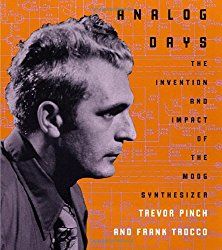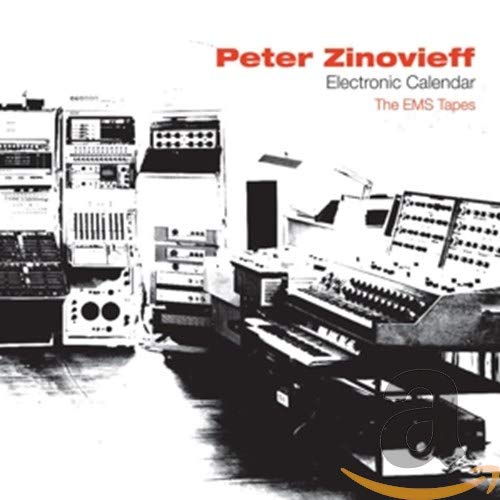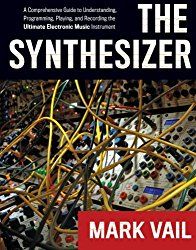Wednesday, August 14, 2019
Quadruple Serge Waveshaper LM3900 wavefolder analog synth module
Published on Aug 14, 2019 Sbranvlztronics
"Quadruple Serge Waveshaper LM3900 wavefolder analog synth module.
Thanks for watching"
06-The Arturia Microfreak- Oscillator types F: Virtual Analog
Published on Aug 14, 2019 AutomaticGainsay
"Here is a demonstration of the sound and functionality of the Virtual Analog oscillator on the Arturia MicroFreak."
Arturia MicroFreak videos by AutomaticGainsay
What does an 8-voice SKULPT sound like?
Published on Aug 14, 2019 Modal Electronics
"Each chord here is the full 8 voices, we have simply hard panned each unit to give some width (4 voices left and 4 voices right) and jammed over some drunken swung drums.
You can chain up to 4 SKULPT's together to give 16 voices with 128 oscilators."
CATCH VCF modulation
Published on Aug 14, 2019 ReBach
"In this demo one VCO modulates a VCF cutoff. A second VCO runs through this VCF and the ADSR controlled the VCA."
Kraftwerk
Modor Noisy oscillator and Formant filter -Dark Vowel patch
Published on Aug 14, 2019
"Today I have a patch using Modor Noisy oscilltor and Modor-Control Filter, a bit of fun with Vowel using dark patch.
to this I added Black Dual VCF-Erica Synths filter for resonance which can be heard when lfo releases it from time to time by opening the filter .. but all the sound comes from Noisy VCO and Control filter. for this I used a little reverb from the Black Hole DSP module from Erica Synths and changed the filter format to the vowel some time, a slight addition of noise from the Noisy oscillator also causes the filter control to process the noise itself, which seems to create a rather dark effect.
More info about Modor eurorack modules here : http://www.modormusic.com
Noisy Oscillator module is and oscillator that mixes two signals: a 'regular' wave (sawtooth/square/triangle) and a 'tonal noisy' wave. This adds a special noisy layer over the sound, that adds 'air', grit or dirt, depending on the combinations you make. The MOD parameter acts on the noisy waveforms:
Sonar Noise: a white noise filtered by a resonant bandpass filter, with 1V/oct tracking of the filter frequency. The MOD parameter controls the resonance.
Wind Noise: white noise filtered by a comb filter, with 1V/oct tracking of the base frequency (delay). The MOD parameter controls a 6dB/oct hipass filter.
Arcade Noise: LFSR noise source as can be found on the SID soundchips (Commodore) or Sega Arcade games. The MOD parameter controls again a 6dB/oct hipass filter.
The noisy wave can be set equal, or 1 or 2 octaves above the regular wave.
The module has two voices, with their own set of CV and output connectors. This can be used to play in a full 2-voice polyphony, or in a 2-voice unison. The outputs can be separate, using both output connectors, or mixed, using only the connector of the second voice.
Next to the 1V/oct pitch CV, the module offers CV control over pitch (FM), the MOD parameter and the sound level:
FM CV: pitch control normalled to 0V, attenuated with the FM knob (+ and -). This allows for Frequency Modulation up to the lower audio range. It's of course a digital module, so higher frequencies can start inducing aliasing and digital artefacts.
MOD CV: CV control for the MOD parameter, normalled to 0V and attenuated with the CV AMT knob (+ and -).
LEVEL CV: CV control for the sound volume, normalled to 7.5V. With this CV control you can omit an external VCA stage if you want.
The CV signals of the second voice (upper row of connectors) are always normalled to the signal of the first voice (lower row), so you can use a single LFO for some FM vibrato or tremolo on both voices, for example. Only the V/oct connector of the second voice is normalled to the first voice with an extra addition of a fixed voltage that can be set using a trimmer at the backside of the module. This way you can use the 2 voices to play in unison with a fixed pitch separation you can set on the backside.
Modor's Formant Filter is a special filter that does a kind of 'vowel morphing' between three vowels. The big central FORMANT control is responsible for that, and on the Eurorack module there's of course a CV control (with attenuation) on this parameter.
You can imagine a formant filter as a set of parallel bandpass filters, picking up and amplifying a set of small frequency bands. For example, with these frequency bands around 750Hz, 1200Hz and 2800Hz, you get the sound of an 'A'. So far, nothing special. There are more formant filters around composed of a set of parallel bandpass filters.
It gets more interesting when you're able to 'morph' between different sets of those formant frequencies. Behind the central FORMANT control, there are 3 of those sets of frequencies. One at full left, one in the middle, and one fully right. So you can for example morph between A-E-O. Or U-I-E. Or AO-UI-EU. Or ...
That's what it does: morphing between different sets of formant frequencies, and that's why it sounds a lot more genuine vowelish than many other static bandpass combinators.
There are 10 preset vowels, that can be selected with the VOWEL button: A-E-O-I-OE-U-EI-EU-AO-U-UI. The vowels of the Dutch language... :-)
The 1-2-3-4 controls on top give you the possibility of composing your own vowels by manually adjusting the frequency bands."
Testing Sidrax trig outputs on my Radio Music modules
Published on Aug 14, 2019 batchas
"Tested the Sidrax to trig events on the Radio Music.
The piezos behind the wood pads are very sensitive, so taping on a pad might also activate trig out on another pad, and it's not what I intend to do actually."
Some weirdness to start the day's posts.
Tuesday, August 13, 2019
Waverazor Dual Oscillator Introduction
Published on Aug 13, 2019 MOK
"The Waverazor Dual Oscillator is now available! This complex and innovative oscillator module’s patented wave-slicing synthesis presents a novel approach to sound generation that splices waveforms into twisted and aggressive new timbres. Visit MOK.com for more information."
Mulogix Slave 32 Documents & Resources
This one is in via the seller of the Mulogix Slave 32 posted here.
"Here is a google drive URL to a high quality scan of the Schematic, User Manual in two parts, the Digital Synthesis Module RS-232 Interface Technical Reference manual, Mulib Users Guide, the Feature Specification with reference sheet, blank Beta Test Registration form, Software and voice library for the Slave."
MOK Waverazor demo and patch programming
Published on Aug 13, 2019 CatSynth TV
"We explore the Waverazor, a unique and powerful software synthesizer from MOK. Each oscillator generates sound from one or more waveform slices that can be changed and modified in real time, with the oscillators feeding into multiple filters and finally to a mixer and effects section.
We demo several of the factory presets (including a second bank created by Richard Devine), and give a short tutorial on basic programming of the oscillators, filters, and modulation matrix."
PREVIOUS PAGE
NEXT PAGE
HOME













© Matrixsynth - All posts are presented here for informative, historical and educative purposes as applicable within fair use.
MATRIXSYNTH is supported by affiliate links that use cookies to track clickthroughs and sales. See the privacy policy for details.
MATRIXSYNTH - EVERYTHING SYNTH













© Matrixsynth - All posts are presented here for informative, historical and educative purposes as applicable within fair use.
MATRIXSYNTH is supported by affiliate links that use cookies to track clickthroughs and sales. See the privacy policy for details.
MATRIXSYNTH - EVERYTHING SYNTH

























